At last, a packaged solution for gray water treatment & recycling - the Hydraloop
Reducing home water consumption is an increasingly important issue, as the world is already facing a global water shortage crisis. We don’t think much about it in Canada & America because most of us have yet to suffer the extreme impacts of droughts - or we prefer not to acknowledge the problem and hope it will go away (similar to how denial is supposed to help climate change go away). Doesn't it? Oh...
But in certain areas of the US, to avoid catastrophic urban and agricultural droughts, we have to begin implementing commercial and residential water conservation measures immediately. And THAT cheery preamble, is actually to lay the groundwork about an innovative and award-winning solution for water conservation that we find to be really good news; a significant advance in domestic gray water recycling technology called the Hydraloop - see here for details. This should come as music to the ears of folks in California, Texas, Oklahoma, Arizona, Kansas, New Mexico and Nevada - for whom living with water-shortages and drought is becoming an unfortunate way of life - and for these areas a viable gray water treatment and recycling system that's designed for both new homes and home renovations is good news indeed.
Hydraloop won a 2020 CES Consumer Technology Association Innovation award for its recently released gray water recycling system, as well as a "Best of the best" for CES from endgaget and "Best of CES" from Time, bringing a commercially available home water conservation system to market in the US that is a vast improvement over existing gray water recovery technology as it's a "plug and play" solution.
DIY gray water systems can be smelly affairs
To know exactly how big an advance the Hydraloop is, you would really need to grasp what residential gray water recycling systems were like up until now. To learn that, we only need to go as far as the home of Ecohome co-founder Emmanuel Cosgrove in Montreal. His was the first LEED Platinum house in Canada, back when he first built it in 2004, and he included a DIY gray water recovery system because there wasn't a commercially available solutions available back in the day.
Emmanuel’s system required the installation of a large concrete holding tank in the basement with a sand filter. It requires a bi-weekly cleaning of the solids trap, as well as an annual replacement of filtration materials. He’s not too put off by that, but one downside he speaks of is that the system (not the delivered water) doesn’t smell that great on occasion. But still, he doesn’t regret installing it.
“Toilets account for about 30% of the water used in a home, and in this day and age I think it’s utterly foolish that we still flush with potable water. That’s partly why we are speeding towards a massive freshwater crisis. To put that in perspective, consider that between my personal residence and the other two floors of rental units, our system treats 80,000 litres of gray water a year which is then used for toilet flushing - as well as irrigating the green roof when needed for food production. So I’m still glad I did it, but this new Hydraloop technology is light years ahead of what I had to build because there weren't any commercially available options” Says Emmanuel.
The original news article all about the EcoHome DIY gray water recycling system is here.
How the Hydaloop gray water recycling system works
The Hydraloop graywater treatment system uses a patented water cleaning and disinfection technology. Ordinary systems use filters or membranes to treat the water, which clog and need regular maintenance. The unique technology at the heart of Hydraloop, removes dirt, soap and other pollution from your bath, shower and washing machine water without using a filter or chemicals. Best news still, Hydraloop automatically cleans itself every few weeks without you having to do anything. Because of this, maintenance requirements are low.
Water from the shower, bath and washing machine gets collected into the Hydraloop. The treatment system combines 5 separate technologies to remove dirt, soap and other particles from the water; Sedimentation, Flotation, Dissolved Air Flotation, Enforced Skimming and an Aerobic Bioreactor. The 6th technology, which is the final treatment, is disinfection using UV light.

How much water can a Hydraloop save?
With a Hydraloop graywater recycling system you can treat up to 95% of shower & bath and optionally 50% of washing machine water, so you recycle and reuse up to 85% of total in-house domestic water. Due to its innovative and breakthrough technology, the system offers an excellent water quality which is clean, clear, safe and certified and can be reused for toilet flushing, washing machine, garden irrigation or to top-up a swimming pool.
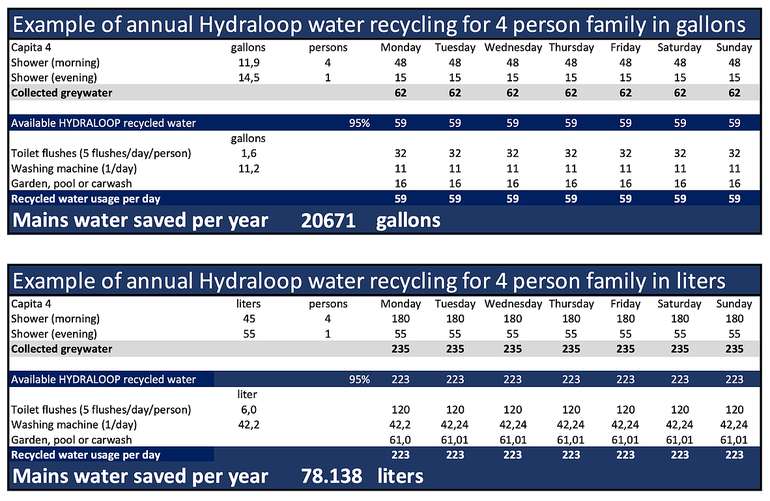
What can recycled gray water be used for?
First, we should distinguish what graywater or grey water is. Graywater refers to waste water from showers, bathroom sinks and laundry, but not kitchen sinks or toilets. That’s known as "black" water and there is no secondary use that you’re going to want that for - except for possible subsoil irrigation for garden shrubs and lawns where it's allowed - because plants are pretty useful for reducing nitrate content too.
Graywater is more easily filtered and treated than "black" water, then used for secondary purposes such as flushing toilets, doing laundry and irrigating gardens - which at least doubles the use we get out of tap water.
Is recycled gray water good to drink?
Uh, nope. No. The recycled water that leaves the Hydraloop system after treatment is clean and meets the highest international standards, but is not intended to be used as potable water. Keep using your taps for that, which, as an aside, is usually equal to or of a higher quality water than what you’ll get from plastic bottles. Just sayin’. We've also tried and like this on counter tap-water treatment jug. Treated gray water from the Hydraloop is also not intended for use in cooking or personal washing, just to be on the safe side, it could be, but still no. Ewww.
Recycling gray water also saves energy
With a Hydraloop system installed it's also possible to save energy in autumn, winter and spring in regions with cooler winter seasons, where mains water temperatures can be as low as 46°F.
The Hydraloop home energy saving comes in three ways in these cooler seasons:
1. The Hydraloop home is installed indoors. The collected shower, bath and optionally washing machine / hand basin water release their remaining warmth to the surrounding area by means of radiation, thus saving energy by keeping this area warm.
2. The washing machine uses recycled Hydraloop graywater which is already at ambient temperature of +68°F so for those that wash with hot water, it needs less electricity to heat the water from 68°F to 100°F compared to from 48°F to 100°F, herewith saving energy.
3. Normally, a 4-person family flushes their toilets with 34 gallons of mains water/day of +48°F, herewith importing cold water inside the house, which your central heating system will heat again to ambient temperature after each flush. With a Hydraloop system the recycled Hydraloop graywater serving the toilets is at ambient temperature of +68°F, so no cold water is imported, herewith saving energy and money. The calculated energy saving for a 4-person family home is 7339 MJ primary energy/year, i.e. the equivalent of an electricity saving of 600kWh/year.
Features of the Hydraloop gray water system
One of the hot green building trends of recent years are smart home features, as we now have the ability to control many of the systems of our homes from smart phones. Home automation features such as programable thermostats, door locks, even skylights and blinds can be controlled remotely to help passively heat and cool a home.
The cool Hydraloop can be monitored and even controlled by an app on your phone, allowing you to prioritize the delivery of recycled gray water and direct it to toilets, outdoor irrigation or even to top up swimming pools. This is a smart system that will go into a sleep mode when there has been no activity for 72 hours, and it will automatically go back into operational mode when water use is detected. How cool is that?
An annual servicing by a professional is recommended but, short of that, this is an extremely low-maintenance system. It doesn’t clog or need filter cleaning or changing, and the system continually performs its own system checks 24 hours a day for safety. If any abnormal behavior is detected, the system will automatically switch to the main water feed and send a caution message to both you and the installer. The system will also automatically be fed with municipal water if there is not enough treated gray water being supplied to meet demand.
Hydraloop is not limited to treating and recycling graywater in new developments; it can be retrofitted to existing houses and apartments as well. We can't help but think it looks a bit like a Tesla powerwall unit!
Now you know more about the Hydraloop gray water treatment & recycling unit...Find more pages about grey water treatment and sustainable and resilient green building techniques in the Ecohome Green Building Guide and these pages:
Sign up for a free Ecohome Membership and get access to preferrred pricing on select building materials! |
















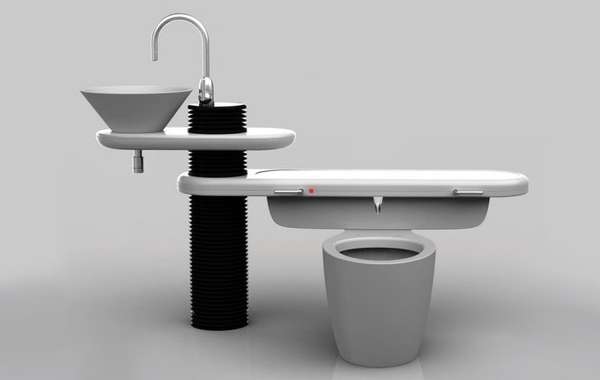
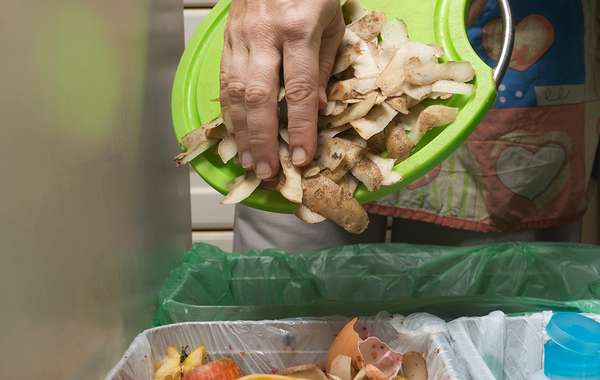


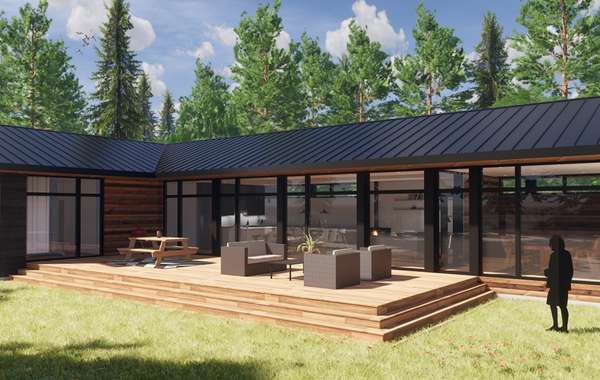
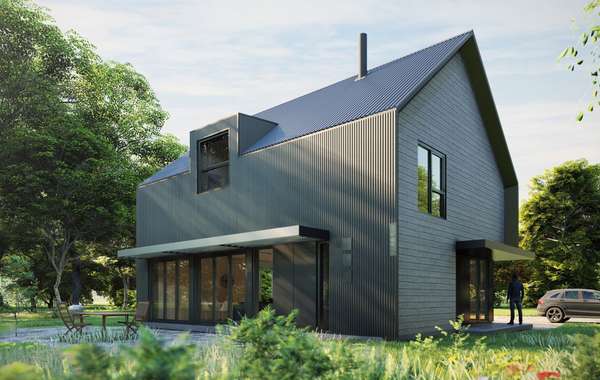

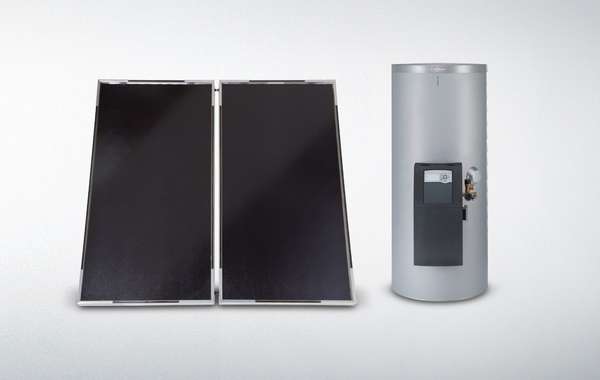

Would kitchen sink waste water be suitable for this system if it passed through a grease trap?
Hi Mark, That's just a feature of ours so we can't speak for the company, but I would say in all likelyhood that would be a firm no I would assume. There is too much solids that go down a kitchen sink which is why they are considered blackwater and included in grey water recycling systems.